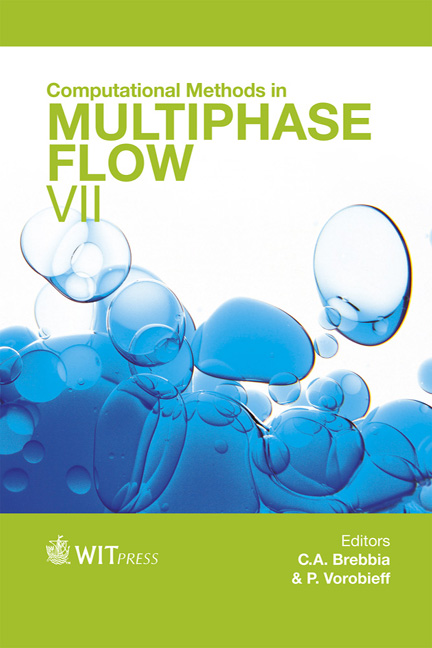Evaporation And Heat Transfer From Thin Water Films On Vertical Panels In Simulated Fire Conditions
Price
Free (open access)
Transaction
Volume
79
Pages
11
Page Range
195 - 205
Published
2013
Size
1311 kb
Paper DOI
10.2495/MPF130171
Copyright
WIT Press
Author(s)
J. de Vries, K. V. Meredith & Y. Xin
Abstract
Understanding and quantifying the interaction of water films and external radiation on vertical walls is critical for fire suppression model validation. In this study, evaporation rates and surface temperatures on heated stainless steel (SS) and corrugated paperboard (CP) vertical panels were measured. External radiant heat flux was provided by an intermediate scale calorimeter (ICAL). Heat flux levels ranged between 7 and 46 kW/m2 and were controlled by varying the distance between the ICAL and the target panel. Water flows ranging between 70 and 1900 ml/min were used in this study. Surface temperatures were measured by a custom calibrated long-wave infrared (IR) camera. Thermocapillary instabilities caused water films to quickly break down into individual rivulets when exposed to external radiation. The maximum surface temperatures on the SS panels were lower than those measured on CP panels due to more effective lateral conduction. The results also showed that water flows on SS surfaces are more effective in extracting heat than similar water flows on CP panels. The experimental results are expected to help understand multi-phase heat transfer for surface flows in fire environments, and to provide validation data for developing numerical models. Keywords: IR imaging, film flow, rivulets, evaporation, FireFOAM, fire suppression, thermal radiation, ICAL.
Keywords
Keywords: IR imaging, film flow, rivulets, evaporation, FireFOAM, firesuppression, thermal radiation, ICAL.





